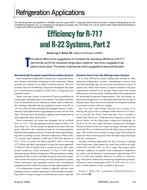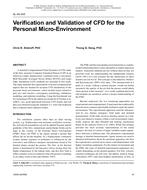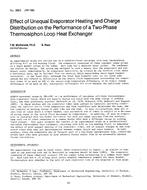There are many high internal heat gain industrial oil and gas process buildings located in northern Canada which require HVAC system solutions. For the most part, these buildings are unmanned and dilution ventilation systems, when engineered and designed properly will provide simple and economical HVAC solutions. A typical dilution ventilation system uses lower temperature outdoor air to remove heat from the building and maintain the space temperature at the internal setpoint, typically 35°C (95°F). Heat rejection from pumps, gear boxes, electric motors, hot process piping etc. needs to be exhausted, or if clean enough, can be recirculated to provide preheating of incoming makeup air. All makeup air shall generally be preheated in the winter to prevent problems such as local freezing spots within the building, subjecting internal process equipment to undesired cold air, as well as internal icing and fogging in the building. Additional supply air will generally need to be introduced in the summer months to account for the higher temperature cooling air.
This paper will summarize typical cold climate HVAC system problems and how heat dilution ventilation methods have been utilized for three of the common building types seen in northern Canadian industrial oil and gas facilities. The three common building types that will be discussed are small pumphouses housing large motors, high humidity buildings and hazardous buildings, each of which present unique challenges in the cold climate environment. In addition, some typical methods of ensuring the maintainability, operability and longevity of the systems and equipment in the cold environment are also discussed.
Citation: Cold Climate Conference, 2012
Product Details
- Published:
- 2012
- Number of Pages:
- 8
- File Size:
- 1 file , 570 KB
- Product Code(s):
- D-CCC12-6


